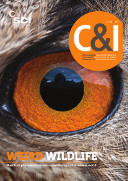‘Cut and paste’ methods of gene editing, such as CRISPR,have been hailed as the next generation of genetic engineering technologies. They rely on nuclease enzymes to snip DNA at a specific location in an organism’s genome in order to correct a faulty sequence or insert a new gene.
Now, researchers claim to have hit on an alternative ‘natural’ method, which they say could be even more precise – and potentially safer for patients undergoing gene therapy procedures.
‘Homologous recombination is the evolved mechanism used by all species over millions of years to promote genetic diversity, by swapping of closely related sequences of DNA from one chromosome to another,’ says Arthur Tzianabos, CEO of Lexington, Massachusetts-based Homology Medicines, in the US. The major advantage over gene editing technologies such as CRISPR, Talens and Zinc fingers, he claims, is that it does not require nucleases to locate the targeted DNA sequence.
Although CRISPR and other next generation tools have vastly improved accuracy, in Tzianabos’ view they are still not precise enough to be curative and safe. The problem with using nucleases is that they cut DNA not just at the site of interest but also at other sites that share the same nucleotide sequence, he says. ‘A complete genome contains millions of nucleotides so the chances of this occurring are relatively high.’
Until now, however, homologous recombination has remained strictly in the realms of biology. It occurs, for example, during the process of mammalian cell division called meiosis to produce eggs and sperm. But in 2014, Saswati Chatterjee, a professor of surgery at City of Hope Hospital in Los Angeles, US, reported the discovery of a new family of adeno associated viruses (AAVs) in human bone marrow. What Chatterjee also observed, but never reported, is that these novel Clade F viruses carry out homologous recombination more efficiently and at a much higher rate than other AAVs. Importantly, AAVs such as AAV9 are commonly used in gene therapy trials, where they act as ‘vectors’ for transporting new DNA sequences into cells.
‘Essentially what we have here is a natural mechanism to do gene editing in vivo, versus CRISPR which uses nucleases extracted from bacteria,’ Tzianabos explains.
Engineered DNA carried by the virus can be swapped with ‘faulty’ DNA inside cells by a process of molecular recognition, involving long complementary sequences of nucleotides at either side of the targeted region. It is this ‘Velcro-like’ attachment of homologous nucleotide sequences to the left and right of the target DNA that makes homologous recombination so precise, Tzianabos says.
Homology researchers are now carrying out in vivo and preclinical studies to establish proof of concept in animal models of rare diseases. The details are as yet unpublished, but engineered DNA sequences have been found to attach only to the region of target DNA to be corrected, he reports. ‘There are no remnants of random DNA filling in the gaps following a double stranded DNA break [as occurs with nucleases].’
And because DNA swapping occurs in one step, Tzianabos believes that editing with AAV should also be cheaper and simpler than other editing technologies, which typically need a separate vector to insert the new genetic material once the genome has been cut.
‘Right now CRISPR and other nuclease-based approaches are mainly used ex vivo so you have to take cells out, do the editing, confirm this is OK and then put cells back into the body. Here we can do the editing in vivo,’ he says. ‘In other words, one injection of virus containing the engineered sequence can find the right cells and make the correction.’
Another important finding, he adds, is that the virus distributes much faster/better than other known AAVs, and is able to travel through the blood into the brain – opening up the tantalising possibility of a gene therapy to treat CNS disorders.
Homology Medicines was formed in December 2015, following a $43.5m financing deal co-led by 5AM Ventures and ARCH Venture Partners. It was Kush Parmar, managing partner at 5AM and now a Board member at Homology, who realised the potential when Chatterjee told him of her findings back in 2014. The meeting also led to a licensing agreement with City of Hope and the publication of a patent application in March 2016. The management team of Homology worked together at pharma company Shire and have ‘deep experience’ of developing genetic therapies, says Tzianabos.
As for a timeline when the technology will enter the clinic, he notes that ‘if it took five years I’d be out of a job.
I’m rooting for everybody in the gene editing space, but we have something naturally occurring and that lends itself to being developable quicker.’
Clade F viruses have been found in the bone marrow of around 75% of people tested, and are either present at birth or acquired. Why, remains unclear, but their ability to induce homologous recombination so rapidly is thought to be related to the composition of their ‘capsid’ coating.
A detailed research paper is in the pipeline.





